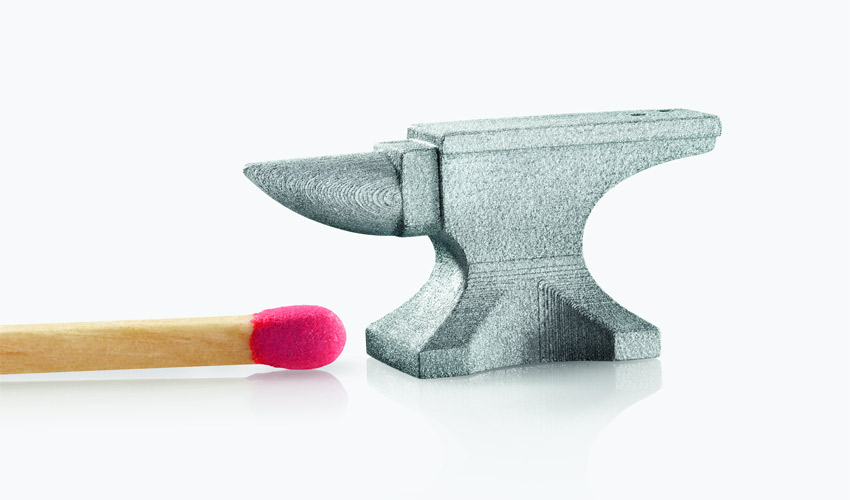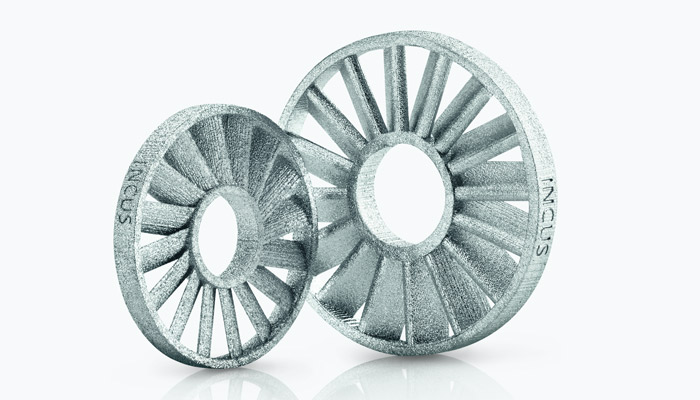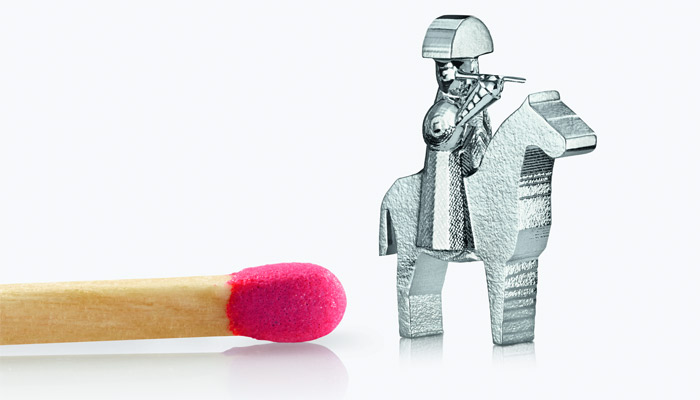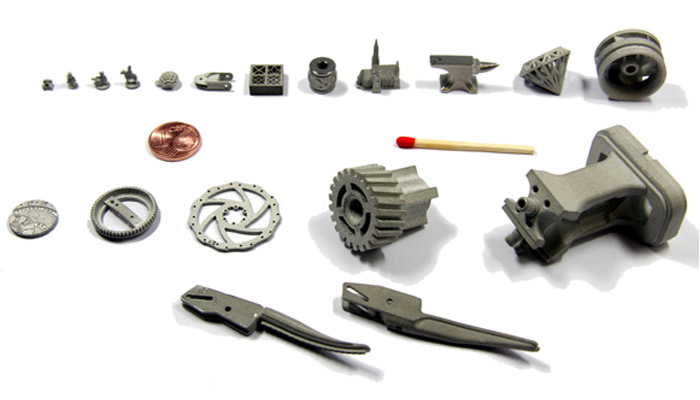Incus develops a metal 3D printing process based on lithography

Incus is a startup based in Vienna, it came about thanks to a collaboration between several engineers from Lithoz, an expert in ceramic additive manufacturing. In fact, this young company has developed a metal 3D printing process based on a photopolymerization technique. This allows it to obtain aesthetic parts with an improved surface finish, as the technology can process very fine powders. Incus has now developed four beta machines that are currently being tested by European manufacturers. We met with Gerald Mitteramskogler, CEO of the company, to learn more about how the technology works, its applications and Incus’ future projects.
3DN: Can you present yourself and your link with 3D printing technologies?

Gerald Mitteramskogler
My introduction to the 3D printing world was during my master studies in mechanical engineering at the Technical University of Vienna. I was working with lithography-based printing of bone replacement and implant material out of ceramics. I was also in charge of an old Direkt Ink Writing printer from formerly Objet (now known as Stratasys). Due to the lack of spare parts (it was one of the oldest models), I sometimes had to get creative concerning the maintenance of components. These trials and tribulations provided me a great insight into the engineering of an industrial 3D printer. I continued with my PhD at the same institute with the topic of 3D printing dental crowns and bridges and selectively colouring them in one single step.
3D printing is so fascinating to me because you get to immediately see what you are producing because it is literally being built before your eyes. There is a lot of trial and error in developing something new and working on a challenge, but there is always a great satisfaction in making adjustments to the parameters to fix a problem and getting to see your great results right away.
3DN: What is Incus? How did it start?
Incus is a technology and machinery provider for the 3D printing of metals. We also provide the raw materials or feedstock for the production of parts made of metals and are looking for joint development opportunities for new materials.
The story of Incus begins after I finished my PhD and joined Lithoz in 2014 as a project manager for national and international research projects. While working on an EU Horizon 2020 project called REProMag in 2015, I came into contact with the fascinating topic of metal additive manufacturing (AM). However, through the project we learned that while the Lithoz technology is excellent for ceramics, the printing of metals requires a different approach.

Credits: Incus
This EU project got me think about a way to solve the issues we had with printing metals and I immediately started working on a first prototype of what is now the Hammer Series machine. In 2017, we achieved a first proof of concept and in 2018 I put my sole focus on metal printing as the Head of Metal Materials at Lithoz and began to build a team. Many long discussions and four prototypes later, we knew we had something that was ready for the next step and together with Lithoz decided to form a new independent company. In October 2019 we founded Incus to bring our concept to market. I now have the honour to lead the team as CEO and bring the technology to the industry. We now have four beta machines in operation around Europe and we are using the valuable learnings from our customers and partners to bring the machines and technology even further.
3DN: Can you tell us more about the technology you developed?
Out technology is a two-stage process. Similar to Material Extrusion or Binder Jetting, we create a so-called green part by using light to shape the single layers. The 3D printer uses a high-performance light unit, which allows a resolution down to 25µm in X and Y. Compared to other AM processes for metals, we can achieve the best surface aesthetics because we can process finer metal powders. Besides the visible advantages, the fine powders also result in excellent mechanical properties and part performance. Since we are using a two-stage process, we can also work with a wider range of metals compared to the laser melting technologies.
3DN: What kind of pieces can we print? What are the main applications of your technology?
It’s hard to name one single dominant application, since AM and especially our process can serve many applications and we are open to any challenge. So far, we have seen interest in the production of prototypes prior to mass manufacturing by Metal Injection Moulding. For example, we printed SIM card holders for a cell phone and the buttons on the side because the customer needed about 50 pieces for prototype phones to be approved before the actual production could begin. Other examples include hinges for eyeglasses, jewellery prototypes and medical instruments. Many of our projects involve small, complex parts that require the best surface aesthetics and mechanical properties.

The technology enables to create very small and precise objects | Credits: Incus
3DN: What are your future projects?
We are working with industry partners to expand our portfolio of available materials. We want to especially focus on materials which are currently very difficult to process or not yet possible with other AM technologies. We are seeing interest in titanium, tungsten, hard and precious metals. We are also working on upscaling our printing process and the whole production chain. We have a few technology concepts which we plan to try out in the near future.
3DN: Where do you see metal additive manufacturing in 5 years?
The metal AM market will still grow, however, the hype phase is over so the growth is slowing. A visible symptom is that, apart for some unicorns, metal AM has not yet reached the mass market for parts. I believe this is because of issues with the available printers and processes. If you look behind the claims of faster printing speeds and even bigger building platforms, metal AM is currently not able to provide a consistent part quality in terms of surface aesthetics and mechanical properties. The AM industry, mainly the machine and technology suppliers, could address this issue by focussing on improving the fundamental principles of existing processes and developing new ones. If the time and energy is spent in bringing AM technology forward, I think you will see the range of applications and the general acceptance grow significantly in the next five years.

Credits: Incus
3DN: Any last words for our readers?
The vision for Incus is that our technology will enable solutions for even more challenging applications, such as aerospace or energy, and will further push the boundaries of AM. AM is already transforming the way we design and create things and will become even more important in the future. I am excited to see what will happen in the industry and also for Incus as a company. Come visit us at the Formnext in Frankfurt in November to learn more!
You can find more information HERE.
What do you think of Incus’ technology? Let us know in a comment below or on our Facebook and Twitter page! Don’t forget to sign up for our free weekly Newsletter, with all the latest news in 3D printing delivered straight to your inbox!







